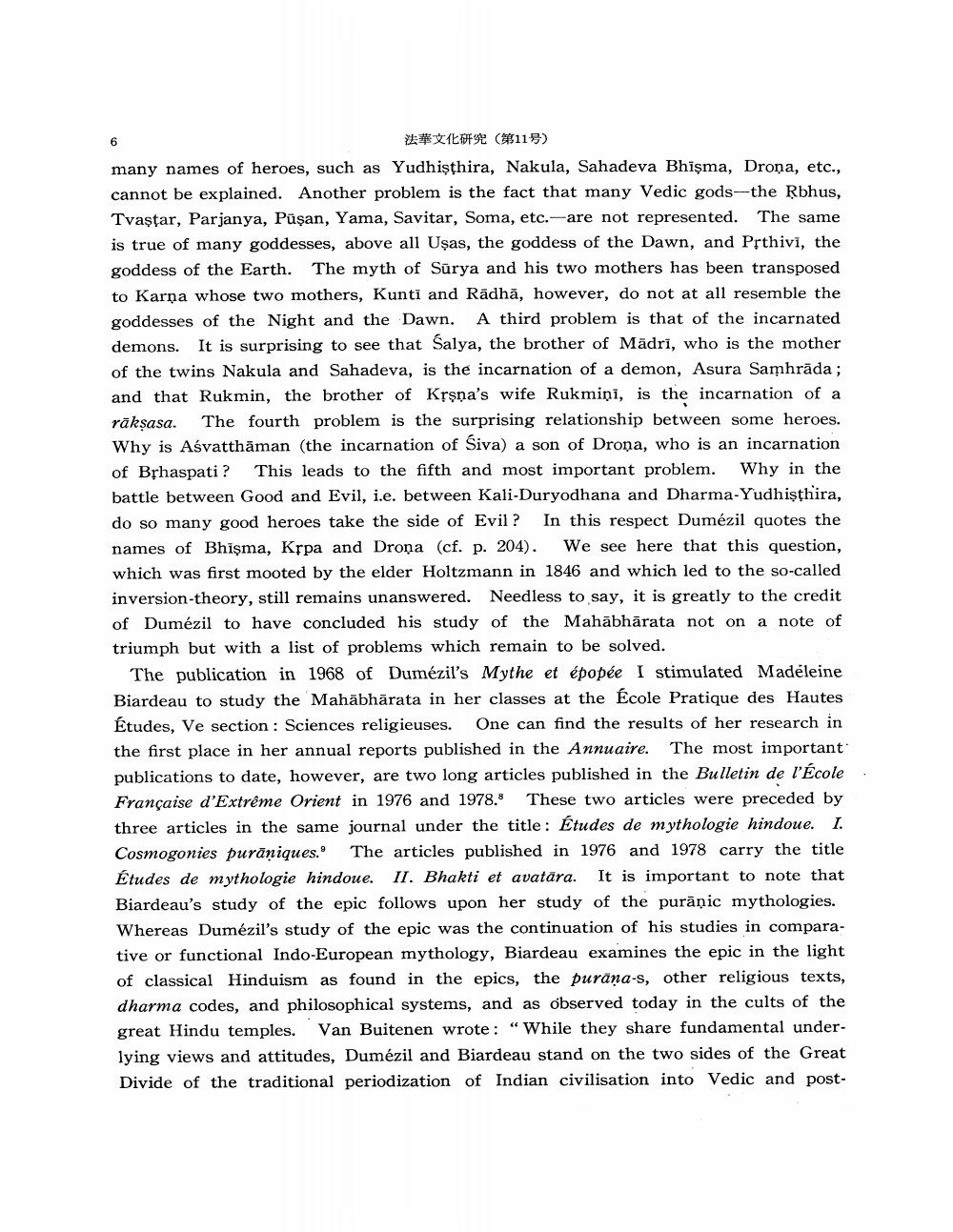Book Title: Study Of Mahabharata Author(s): J W De Jong Publisher: J W De Jong View full book textPage 6
________________ 法華文化研究 (第11号) many names of heroes, such as Yudhisthira, Nakula, Sahadeva Bhişma, Drona, etc., cannot be explained. Another problem is the fact that many Vedic gods-the Rbhus, Tvaştar, Parjanya, Püşan, Yama, Savitar, Soma, etc. are not represented. The same is true of many goddesses, above all Uşas, the goddess of the Dawn, and Prthivi, the goddess of the Earth. The myth of Surya and his two mothers has been transposed to Karna whose two mothers, Kunti and Rädha, however, do not at all resemble the goddesses of the Night and the Dawn. A third problem is that of the incarnated demons. It is surprising to see that Salya, the brother of Mädri, who is the mother of the twins Nakula and Sahadeva, is the incarnation of a demon, Asura Samhrāda ; and that Rukmin, the brother of Krsna's wife Rukmini, is the incarnation of a rākṣasa. The fourth problem is the surprising relationship between some heroes. Why is Asvatthaman (the incarnation of Śiva) a son of Drona, who is an incarnation of Brhaspati ? This leads to the fifth and most important problem. Why in the battle between Good and Evil, i.e. between Kali-Duryodhana and Dharma-Yudhisthira, do so many good heroes take the side of Evil? In this respect Dumézil quotes the names of Bhişma, Krpa and Drona (cf. p. 204). We see here that this question, which was first mooted by the elder Holtzmann in 1846 and which led to the so-called inversion-theory, still remains unanswered. Needless to say, it is greatly to the credit. of Dumézil to have concluded his study of the Mahabharata not on a note of triumph but with a list of problems which remain to be solved. The publication in 1968 of Dumézil's Mythe et épopée I stimulated Madeleine Biardeau to study the Mahabharata in her classes at the École Pratique des Hautes Études, Ve section: Sciences religieuses. One can find the results of her research in the first place in her annual reports published in the Annuaire. The most important publications to date, however, are two long articles published in the Bulletin de l'École Française d'Extrême Orient in 1976 and 1978." These two articles were preceded by three articles in the same journal under the title: Études de mythologie hindoue. I. Cosmogonies puraniques." The articles published in 1976 and 1978 carry the title Études de mythologie hindoue. II. Bhakti et avatara. It is important to note that Biardeau's study of the epic follows upon her study of the puranic mythologies. Whereas Dumézil's study of the epic was the continuation of his studies in comparative or functional Indo-European mythology, Biardeau examines the epic in the light of classical Hinduism as found in the epics, the purana-s, other religious texts, dharma codes, and philosophical systems, and as observed today in the cults of the great Hindu temples. Van Buitenen wrote: "While they share fundamental underlying views and attitudes, Dumézil and Biardeau stand on the two sides of the Great Divide of the traditional periodization of Indian civilisation into Vedic and postPage Navigation
1 ... 4 5 6 7 8 9 10 11 12 13 14 15 16 17 18 19 20 21
